If you own a Shopify store, you’re working hard to devise strategies to make more money for your store. There are three ways to achieve that: get your customers to buy, get them to buy more often, and get them to buy more products per purchase.
However, it’s easier said than done so I will share strategies to show you how to cross sell on your Shopify store effectively. Keeping track of which products actually move together is key, and using something like the Shopify sales tracker can highlight patterns you might miss on your own.
I’ve tried various selling strategies and found that cross selling is among the most effective. It works because you’re not only convincing your customers to buy from your store but also increasing each customer’s average order value.
While attracting more customers is important, I believe that cross selling strategies enable you to maximize your time and investment in nurturing each customer.
So, if you haven’t tried cross selling, you’ve come to the right place! Keep reading to learn about the benefits of cross selling and master how to Shopify cross sell while enhancing the customer experience within your online store!
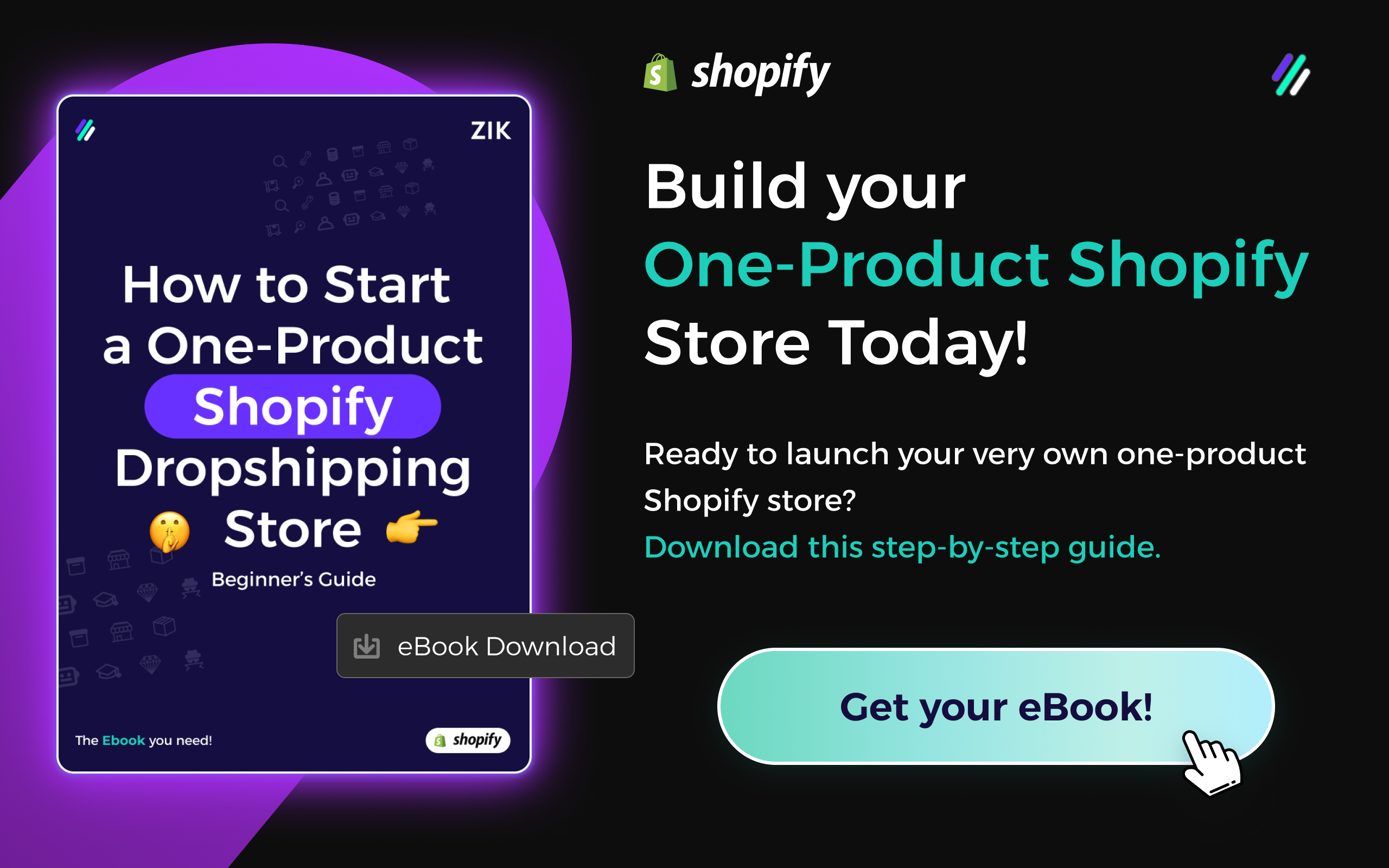
Key Takeaways
- Cross selling is an excellent strategy for increasing sales by making your customers buy more products or increasing their order value.
- Cross selling can be done within the product page, checkout page, or in post purchase emails.
- Create a solid cross selling strategy to ensure you can offer products that align with customers’ needs and buying behavior.
- Integrating cross selling apps into Shopify makes it easier to display product recommendations and cross sell to your customers.
What Does it Mean to Cross Sell?
Cross selling is a popular Shopify marketing strategy that encourages customers to buy more or increase their average order value.
The cross selling strategy recommends related or similar products within your store relevant to what the customer has already added to their cart or bought. The idea is to help customers make the most of their recent purchase by selecting the product that would complement their purchase.
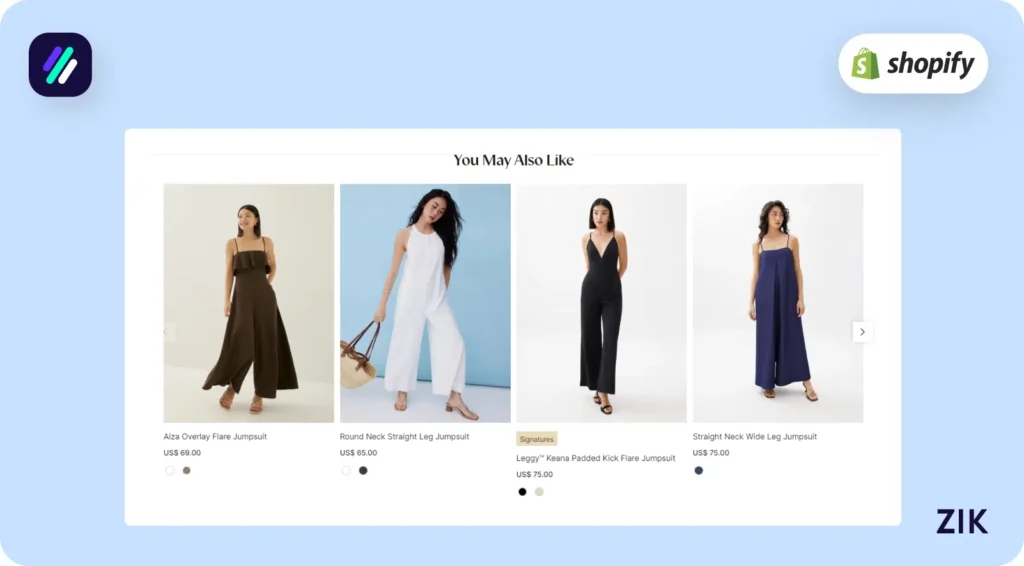
For example, a customer orders a dress from your Shopify store. Once they add an item to their cart or finalize the purchase, you can recommend complementary products, such as shoes and other fashion accessories, to match their selected item.
Since the customer has selected their initial purchase, it increases the chances of them adding complementary products to their order based on their preference and buying behavior.
Cross selling is a win-win situation for the online store owner and the customer. The customer gets more value in their purchase and an improved customer experience.
It simplifies the customer journey by allowing them to find relevant products with just a few clicks. On the other hand, the online store owner gets more revenue from the customer purchases.
Effective cross selling allows you to sell multiple products per customer or transaction.
Why Consider Cross Selling in Your Shopify Store?
Now that you know how to cross sell, is it worth it? Let’s explore the benefits of cross selling strategies for your store.
1. Increase Average Order Value
Let’s start with the obvious one—increasing the order value per transaction. Every Shopify store owner aspires to increase revenue, and one of the most effective ways of doing that is to maximize the order value per customer.
The average order value refers to the amount in dollars (or any currency, depending on where you are selling) that a customer spends for each transaction.
You can increase the order value per transaction by recommending other products that would complement the main product the customer initially intended to buy. Buying multiple products from your online store means the higher the order value.
A study by McKinsey states that well-executed cross-sell recommendations can potentially boost profits by 20-30%. One strategy that online store owners employ is to add the product recommendation at the checkout page, which limits the customer’s ability to think about their purchase and entices them to make an impulsive decision.
2. Capitalize on Impulse Buying Tendencies
According to this study, up to 80% of purchases are impulse buys. Impulsive buying has gotten such a bad rap, but it does not mean customers who buy impulsively have not planned their purchase before taking action.
Impulse purchases could mean that a customer who has saved a product on the add to cart page has decided to finalize their purchase, along with a few other recommended items and the original product.
3. Save on Shipping Costs
Another advantage of cross selling is that you can reduce shipping costs. Highlight this benefit to your customers, especially if you can appeal to eco-conscious consumers.
Packaging and shipping items simultaneously instead of multiple small orders makes sense financially. Plus, it also benefits the seller because packaging materials can eat at your profits.
4. Enhance Customer Shopping Experience
Cross selling to your customers can make them feel like you’ve spent time understanding their needs and preferences. Store owners can use different methods in recommending products to their customers.
You can determine it based on their recent purchase or items frequently bought together. Either way, taking the time to personalize your recommendations is an effective way to persuade customers to purchase the suggested product.
A good example is when fashion Shopify stores create a “Complete the look” widget on each product page. When a customer views a specific product, you can promote products through a thoughtfully curated bundle to create a cohesive look.
It enables the customer to discover products they might not be able to find themselves or would not have thought would be successful with the entire outfit.
So, how does effective cross selling boost the customer’s experience?
First, it shows that you understand the needs of your customers and want to offer them products that they would find useful. Second, personalized buying recommendations make customers feel they are getting good value for their money.
And because of a personalized shopping experience, it is more likely that customers will make a repeat purchase.
5. Move Inventory Faster
Customers buying your products with the cross sell method is an excellent way to move your inventory. It ensures you can move products to customers to minimize inventory management costs. At the same time, it is a great way to boost sales for slow-moving items.
The cross selling method works best when you are about to introduce new products to your online store. Some sellers can offer a discounted price to create a sense of urgency and get customers to take action.
6. Optimize Product Visibility
Maximizing product exposure is a huge step toward getting potential customers to increase their average order values. You know the phrase “out of sight, out of mind”?
The cross selling strategy works in reverse here. You want to promote a relevant product on your other product pages to increase product visibility.
Cross selling encourages customers to explore additional products that might catch their interest. It fosters that sense of curiosity, especially when adjusted to a customer’s behavior.
It positions you to generate increased sales and showcase your store as a comprehensive destination within your market.
7. Boost Customer Lifetime Value
Customer lifetime value refers to the total income you generate from a single customer throughout the buyer’s journey with your online business. It is where the power of cross selling can truly work its magic.
Providing useful recommendations to your clients can help boost their order value per transaction.
In addition, making cross sell recommendations to an existing customer is more likely to have a positive response than a new customer. The returning customer already trusts your brand and store, making it easier for them to trust your recommendations.
The high returns you get from each customer can compensate for any resources spent toward your marketing efforts to attract new customers.
Download this eBook to jump start your dream Shopify business today!Upselling and Cross Selling: What’s the Difference?
It’s easy to confuse upselling and cross selling, so it is important to distinguish them clearly.
As a Shopify store owner, choosing the right marketing tactic could spell the difference between increasing your average order value and stagnating sales. Therefore, you must be aware of what strategies you use to maximize results and improve your buyer’s journey.
When you upsell customers, you offer related or complementary products that are higher priced than the initial purchase. For example, a customer is looking to buy a mid-range laptop for $1,200 but you upsell customers with another laptop with a higher processor and memory, sold for $2,000.
You offer the product so that customers will understand the benefits of investing more in it, ensuring that you consider your buyer’s journey and what value they can get from it. At the same time, you want them to spend more on a similar product they are currently looking at.
On the other hand, cross-selling focuses more on encouraging customers to buy multiple products or related items. This could mean that these products cost lower than the initial purchase, which makes it more effective and easier to sell them to customers.
The more products the customer adds, the higher your average order value per customer.
Using the same example above, if a customer wants to buy a laptop, you can cross sell other products that they would be able to use with the laptop. For example, you can recommend a laptop sleeve or a Bluetooth mouse.
Recommending these products enables the buyer to maximize the functionality of such a product. Since it is a logical recommendation, they are more likely to buy the product.
Upselling and cross selling are effective strategies when executed properly, so you must analyze your customers before you choose which strategy to use for a personalized shopping experience.
Cross Selling Best Practices
Want to know the best cross selling strategies to increase customer spending on your store? Try these cross-selling best practices to maximize sales.
1. Cross Sell in Product Pages
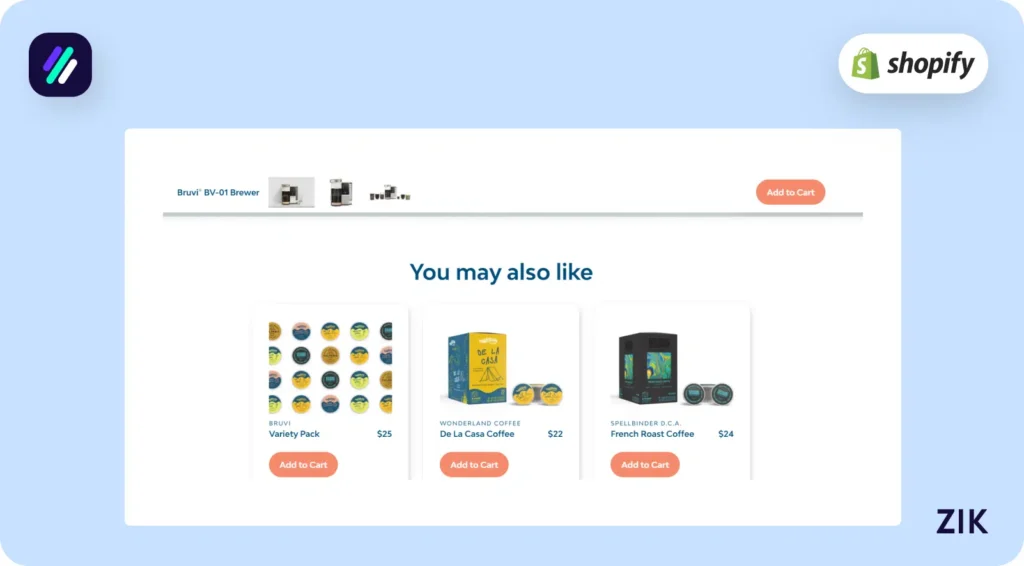
The most obvious place to conduct cross selling is within the product pages. When a customer browses a product page looking for a specific item, they will find the recommended products at the bottom.
Adding these products makes sense, especially if they are relevant or complementary to the specific item they want. It facilitates the exploration of other items in your store, ensuring they are aligned with the customer’s preferences or intended use of the product in question.
If you can add social proof, that’s even better. For example, include reviews of previous buyers who’ve used a few items they purchased from the store. It is common in cosmetics and skin care Shopify stores.
When a customer looks at buying a moisturizer, you can recommend other products they could buy to complete their skincare routine, such as a toner, serum, and eye cream.
There are many ways to effectively showcase your cross sell recommendations on the product page, so you must decide the best approach that aligns with your target customers’ needs.
2. Use Cross Sell Popups
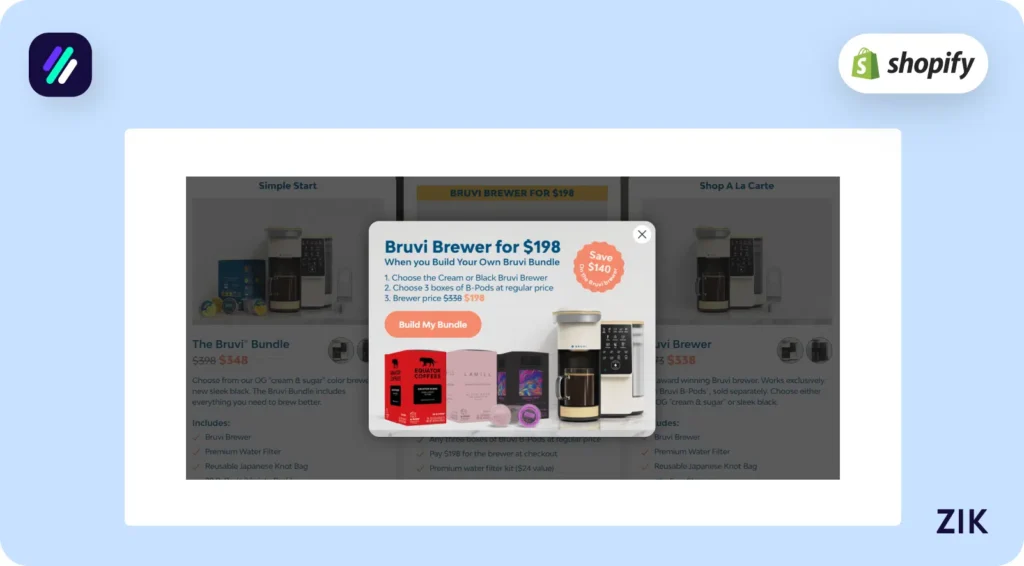
Another way to cross sell in your online store is by adding cross-sell popups. Most customers or store visitors hate popups, but listen up here because there is a really good cause to add cross sell popups.
When a customer browses your store searching for a product, adding cross sell popups creates a sense of urgency and encourages impulse purchases.
The popup feels like a limited incentive offered to them. It fosters a sense of exclusivity, making customers feel as though you’re like a friend who is suggesting they buy this additional product to sweeten the deal.
For your cross sell popups to be effective, you must create compelling call-to-actions (CTAs) to match them.
3. Cross Sell at Checkout
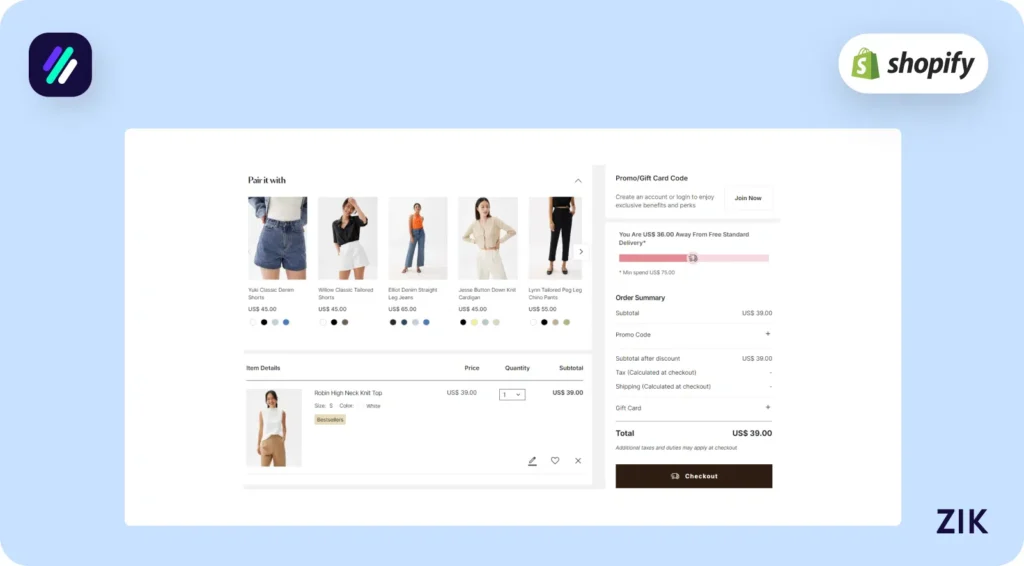
Another excellent place to showcase your cross sell offers is on the checkout page.
Some sellers might think it’s too late to cross sell when the customer is about to finalize their purchase, but it’s an opportune moment to sell. You must capitalize on the customer’s decision to pay for their items and encourage them to make last-minute additions to the cart.
Once they are on the cart page, they are less distracted, and so are able to notice the cross sell offers. Plus, the customer is already about to pay for their items, and adding one or two more items would be convenient at this point of the buyer’s journey.
If done right, cross selling on the checkout page can be an effective way to boost sales for your Shopify store!
4. Give Useful Recommendations
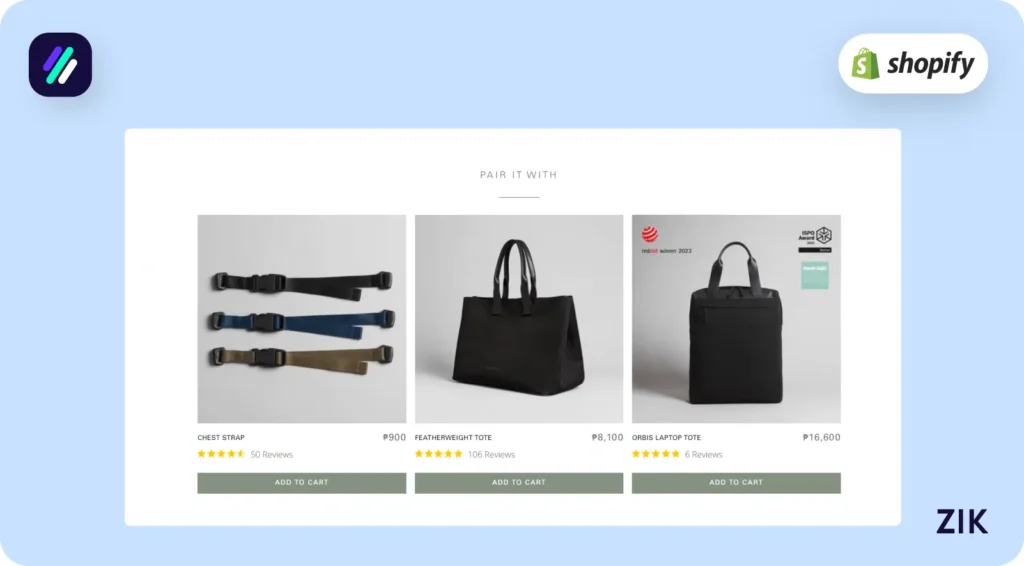
Effective cross selling should come across as genuine, not as a way to make more money for your store (even if that’s really your goal!). This is especially true when you are selling products that require certain accessories or other products to operate.
For example, if you sell a printer in your store, cross sell other accessories, such as a power cord or an ink.
Adding these products to their cart would make sense since customers buying the main product would have to buy them elsewhere, so they might as well save time and effort by purchasing them now.
If possible, demonstrate to your customers how to use the recommended product with the original item. This will enable your customers to see the value in the product you recommended to them, adding credibility to your cross selling strategy.
5. Send Post Purchase Emails
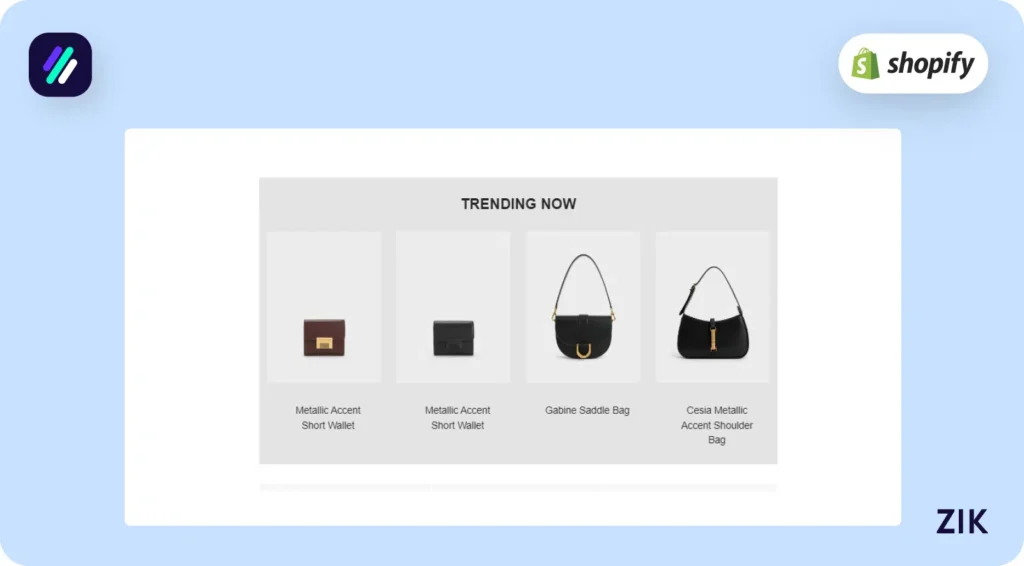
Cross selling can also occur post purchase. It is a great way to maintain and nurture customer relationships by sending out emails and making cross sell messaging on their email following a recent purchase.
Various marketing tools enable you to build an effective Shopify email marketing campaign for your customers based on their sales history.
You must take advantage of the customer’s trust and also enable your store to stay on top of their minds in case they are looking to make similar purchases in the future.
7. Segment Your Customers for Analysis
Even if your store has a target market, the customers can be segmented further, allowing you to take a more customized approach to cross selling.
Not all customers buying from your store have the same preferences or buying behavior. Therefore, you must create different types of customer profiles to make the correct suggestions and maximize your cross-selling efforts within the store.
How to Implement Cross Selling in a Shopify Store
Follow this detailed guide to cross sell in your online store on Shopify.
Step 1
Log into your Shopify admin dashboard and look for Products on the left hand menu.
Click on Products.
Step 2
Choose the product that you want to use for cross selling. It is the product that a customer would want to consider buying initially.
Go to Product Recommendations and toggle on the “Show Recommendations” option. This action will activate the display of recommended products for that particular product.
Step 3
Specify the recommendation type by choosing from the following:
- Bestsellers
- Newest Products
- Similar Products
Pick the product recommendations that fit into your cross selling strategy. Once you have configured the settings, click Save.
Step 4
Integrate Shopify cross selling apps to encourage customers with your product recommendations seamlessly.
You can find many cross selling apps on the Shopify App Store. Using a Shopify cross selling app is beneficial as you can access more advanced features that would fit your cross selling goals.
It also ensures a more personalized shopping experience as your customers can get customized recommendations.
If you get your Shopify cross selling app from within the Shopify App Store, integration shouldn’t be an issue. But if you have trouble setting it up, you can contact the app developer directly.
Step 5
Consider the cross sell design. It must seamlessly integrate into the product or checkout page. It helps make it easier for your customers to see your recommendations as they are prominently showcased without being intrusive.
Step 6
Regularly check the detailed analytics of your cross selling campaign. Monitoring the results of your cross sell allows you to tweak and refine your strategy based on your performance and the sales data.
You can adjust the approach depending on the conversion rate of your cross sell products. Access to detailed analytics enables you to pinpoint the strengths and weaknesses of your strategy and make the proper corrections.
The Bottom Line
Effective cross selling can be the secret to fostering customer loyalty and boosting sales with repeat customers. As business owners always say, you must pay attention to and nurture your existing customers because the majority of your sales will come from repeat buyers.
Cross selling is an effective strategy for making more money with less effort. When executed correctly, it can even enhance a customer’s experience. It is a win-win situation for both parties!
Build a Shopify Store Optimized for Cross-Selling
Want to make Shopify cross sell strategies work from day one? Use ZIK’s Shopify AI store builder to launch a store filled with products that naturally pair well. With smart niche selection and product research baked in, you’ll start with proven winners that boost AOV through effective product combinations. No coding, no guesswork—just data-backed inventory and layout designed to convert.
Frequently Asked Questions on Shopify Cross Sell Tips
Here are some frequently asked questions on Shopify cross-selling tips:
What is cross-selling in Shopify?
Cross-selling in Shopify is a sales technique where you suggest related or complementary products to customers based on what they are already viewing or purchasing. For example, if someone buys shoes, you might recommend socks or laces, boosting average order value and overall revenue.
What is the 25% rule of thumb for cross-selling?
The 25% rule of thumb for cross-selling suggests offering additional products that cost about 25% of the customer’s original purchase. This pricing balance makes the upsell feel affordable and relevant, increasing the likelihood of acceptance without overwhelming the buyer or disrupting their purchase decision.
Can you do upsells on Shopify?
Yes, you can do upsells on Shopify using built-in checkout customization or third-party apps that suggest higher-value or complementary products. Upsells can be shown on product pages, during checkout, or post-purchase, helping stores increase average order value and boost revenue with minimal extra effort.
How to cross-promote on Shopify?
To cross-promote on Shopify, use product recommendations, Shopify bundles, or discounts that pair related items together. Apps let you display “frequently bought together” sections or suggest add-ons during checkout. You can also cross-promote through email campaigns, pop-ups, and social media to encourage multi-product purchases.
Is cross-selling good or bad?
Cross-selling is good when done thoughtfully, as it increases average order value, improves customer experience, and introduces buyers to useful products. However, it can be bad if overused or irrelevant, since aggressive suggestions may frustrate customers, reduce trust, and even cause abandoned carts or lost sales.
What is a good cross-sell rate?
A good cross-sell rate typically falls between 10% and 30%, depending on the industry and product type. Rates closer to 30% usually indicate highly relevant recommendations, strong product-market fit, and effective marketing, while anything under 10% suggests room for optimization in offers or targeting.
How to increase sales on Shopify?
To increase sales on Shopify, optimize product listings with SEO-rich titles and descriptions, use high-quality visuals, and build trust with reviews. Run targeted ads, offer discounts, and use upsell or cross-sell apps. Strong email marketing, fast checkout, and reliable customer service also drive conversions.
What is the difference between cross sell and upsell?
The difference is in focus: cross-selling encourages customers to buy complementary products alongside their purchase, like suggesting a phone case when selling a phone. Upselling promotes a higher-value version of the same product, such as offering a premium phone model instead of the base version.












